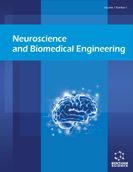Abstract
Background: To make such a large-scale digital PET, we are mainly facing the following technical challenges. First of all, the number of nodes in a large-scale digital PET is generally more than hundreds, how to manage them? When the hundreds of nodes are queried or configured or monitored at the same time, there will always be a high concurrency of data transmission, how to ensure the real-time of communication and reliability?
Objective: Managing hundreds of Detector Unit effectivelly and with good scalability.
Methods: We and other investigators have proposed a communication control subsystem based on CAN and Ethernet in all-Digital PET. It mainly contains three modules: Control Center, System Communication & Switch (SCS) Unit and Detector Unit (DU). Control Center connects one or several SCS units via 100Mbps or Gigabit Ethernet. The two modules exchange control information through the TCP/IP protocol. The SCS Unit is connected with dozens of detectors through the CAN bus
Results: With Ethernet and CAN bus in our Digital Pet, the Control Center can connect up to 100 SCS Units with Gigabit Ethernet. Each SCS Unit can communicate with almost 100 DUs with 500kbps CAN bus.
Conclusion: The good scalability and high bandwidth of CAN and Ethernet perfectly solve the problem that the complex communication of hundreds of detector nodes in digital PET system.
Keywords: fMRI, biophysical modeling, signal modeling, medical imaging, microstructure, non-convex optimization.
Graphical Abstract
 9
9 2
2 2
2 1
1

